Maori face tattoos, also known as moko, are a traditional form of tattooing that originated in the indigenous Maori culture of New Zealand. These tattoos are highly symbolic and are worn by both men and women as a way to connect with their cultural heritage. In this article with Impeccable Nest, we will explore the meaning of Maori face tattoos and their significance in Maori culture.
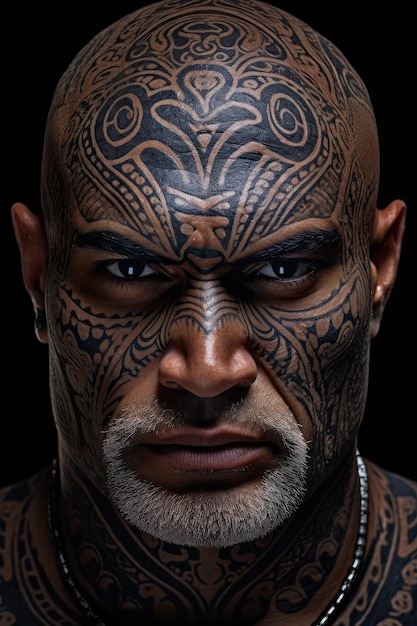
What are Maori Face Tattoos?
Maori face tattoos, or moko, are a unique form of tattooing that is specific to the Maori people of New Zealand. The tattoos are applied using a chisel, which creates grooves in the skin that are then filled with ink. The designs are intricate and highly detailed, with each one containing significant meaning and symbolism.
Traditionally, Maori face tattoos were reserved for men who had proven themselves worthy of wearing them. However, in modern times, women are also getting face tattoos as a way to honor their culture and connect with their ancestors.

History of Maori Face Tattoos
Maori face tattoos have a long and rich history in Maori culture. The practice dates back over 1,000 years and was an integral part of Maori society. The tattoos served as a way to symbolize one’s rank, status, and ancestry.
In pre-European contact times, Maori face tattoos were only given to men who had achieved certain milestones in life, such as becoming a warrior or reaching a high level of social status. Women were not allowed to receive face tattoos, but they could get tattoos on other parts of their body.
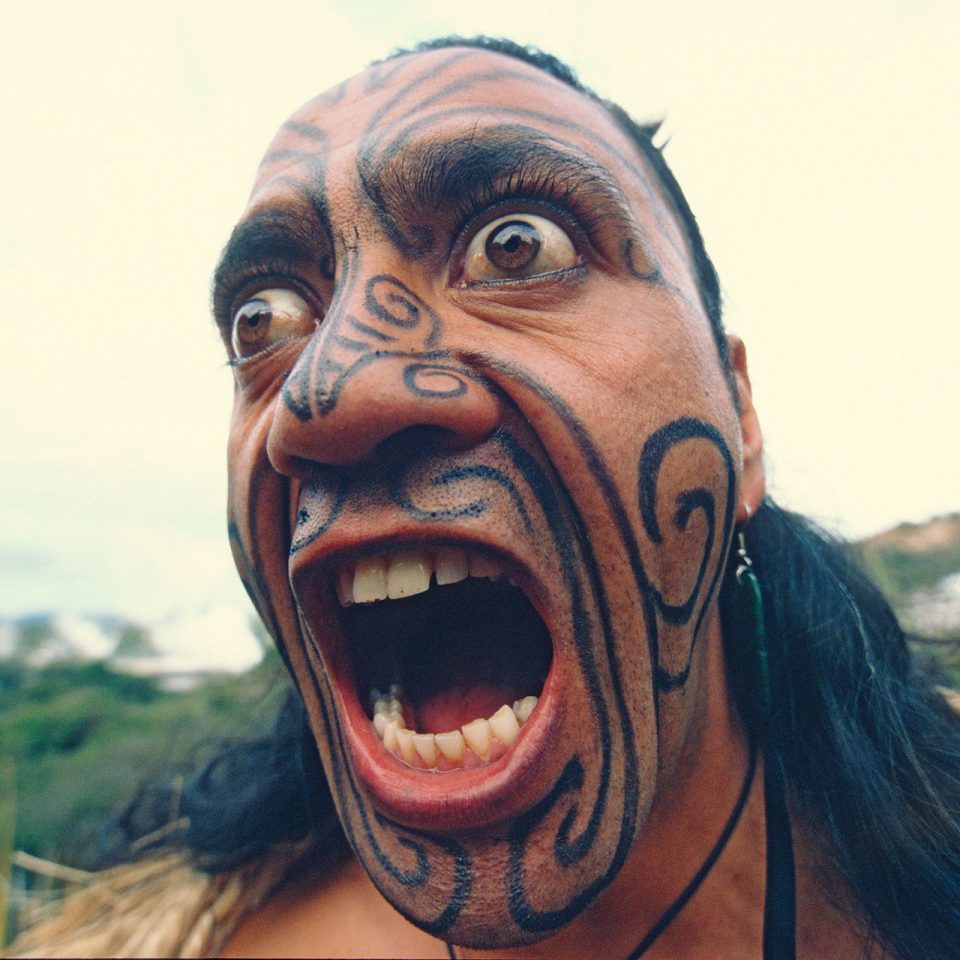
Maori Face Tattoo Meaning: What is the Significance?
Maori face tattoos, also known as “moko” or “ta moko,” hold significant cultural and spiritual meanings within Maori society, which is the indigenous people of New Zealand. These tattoos are much more than just decorative; they tell a story of the wearer’s identity, heritage, and life journey. The meaning of Maori face tattoos can vary based on the specific design, placement, and individual’s lineage, but here are some general concepts associated with them:
Genealogy and Lineage
Maori face tattoos, also known as “Ta Moko,” are traditional tattoos that hold great cultural and spiritual significance in Maori culture. The art of Ta Moko has been practiced by the Maori people for centuries and was used as a way to identify one’s social status, rank, and place within their tribe.
Each tattoo design is unique and carries specific information about the wearer’s ancestry, family connections, and tribal affiliations. For example, a pattern on the forehead may represent the wearer’s parents, while designs on the cheeks may symbolize their siblings and cousins.
The process of getting a Maori face tattoo involves both physical and spiritual preparation. The tattoo artist, who is often a respected elder in the community, will work with the wearer to select a design that reflects their personal history and cultural heritage.

The tattooing process itself is done using traditional tools such as chisels or needles, which are tapped into the skin using a mallet. The process can be painful and may take several sessions to complete. However, the end result is a beautiful and meaningful piece of art that serves as a permanent reminder of one’s heritage and identity.
In addition to serving as a visual representation of one’s genealogy and lineage, Maori face tattoos also carry spiritual significance. The designs are believed to connect the wearer to their ancestors and the spirits of their land and culture. The process of receiving a Ta Moko is seen as a rite of passage and a way to honor one’s cultural traditions.
In modern times, Maori face tattoos have gained popularity outside of New Zealand, and many people around the world now choose to get Ta Moko designs as a way to connect with Maori culture and their own ancestral roots.
Overall, Maori face tattoos are a powerful symbol of cultural heritage, identity, and connection to one’s ancestry. They serve as a reminder of the importance of preserving and honoring cultural traditions and can inspire a sense of pride and belonging in those who wear them.
Personal Identity
Ta moko is the traditional Maori form of facial tattooing that has been practiced for centuries. It is a deeply significant cultural tradition that conveys a person’s identity within their community. The designs of ta moko are unique to each individual and represent their lineage, personal history, and achievements.
In Maori society, ta moko is seen as a way of identifying oneself and communicating their social status within their tribe. The placement and design of the tattoos convey information about a person’s role and achievements within the community. For example, a chief might have more intricate and extensive tattoos than a regular member of the tribe.
The process of getting a ta moko tattoo is a sacred ritual that involves both the tattoo artist and the person receiving the tattoo. The artist will work with the individual to design a tattoo that reflects their personal history and cultural identity. The tattoo is then applied using chisels and ink, creating a permanent marking on the skin.
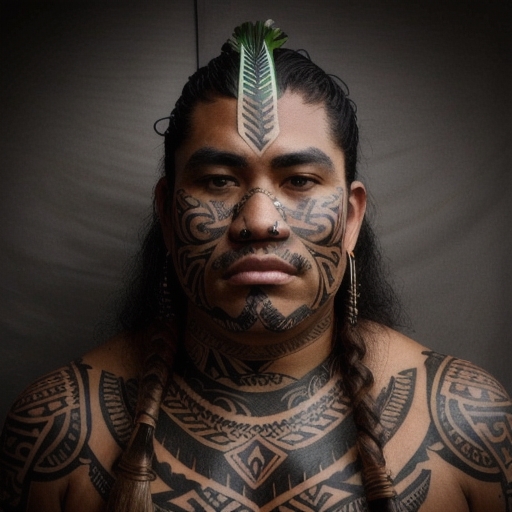
While ta moko is a deeply meaningful and culturally significant tradition, it was nearly lost during the colonization of New Zealand by Europeans. Many Maori people were forced to abandon their cultural practices, including ta moko, in order to assimilate into European culture. However, in recent years, there has been a resurgence of interest in ta moko among Maori people, and it is once again being embraced as a symbol of cultural identity and pride.
Life Story and Achievements
Maori face tattoo, also known as Ta moko, is a traditional form of body art that has been practiced by the Maori people of New Zealand for centuries. It involves using chisels and ink to create intricate designs on the skin, with each design holding significant cultural and personal meaning.
The Maori people believe that their tattoos represent their identity, heritage, and status within their community. Different parts of the face and body might be tattooed to symbolize various life events, accomplishments, or milestones.
For example, a tattoo on the forehead might signify leadership or intellectual ability, while a tattoo on the chin might represent strength and determination. Tattoos around the eyes might denote a person’s ability to observe and interpret their surroundings, while those on the cheeks might indicate a person’s willingness to protect their family and community.
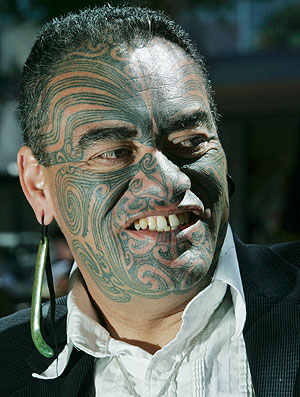
In addition to representing external achievements and abilities, Maori face tattoos can also denote personal experiences or transitions. For example, a tattoo on the lips might signify a coming-of-age ceremony, while a tattoo on the nose might represent a loved one who has passed away.
Each tattoo design is unique and tailored to the individual, with the artist working closely with the person receiving the tattoo to ensure that the tattoo accurately reflects their personality, experiences, and aspirations. The process of receiving a Maori face tattoo is also deeply symbolic, involving rituals and ceremonies that are designed to connect the person receiving the tattoo to their ancestors and cultural heritage.
Overall, Maori face tattoos are an important part of Maori culture and identity. They serve as a powerful symbol of the individual’s connection to their community, history, and traditions, and are a testament to the enduring legacy of the Maori people.
Spiritual and Cultural Connection
Maori face tattoos, also known as “ta moko,” are a traditional form of body art practiced by the indigenous Maori people of New Zealand. These tattoos are deeply meaningful and serve as a way for individuals to connect with their cultural heritage and identity.
Ta moko is more than just a decoration or fashion statement. It is a sacred practice that has been passed down through generations of Maori. The designs are unique to each individual, and they carry significant meaning and symbolism.
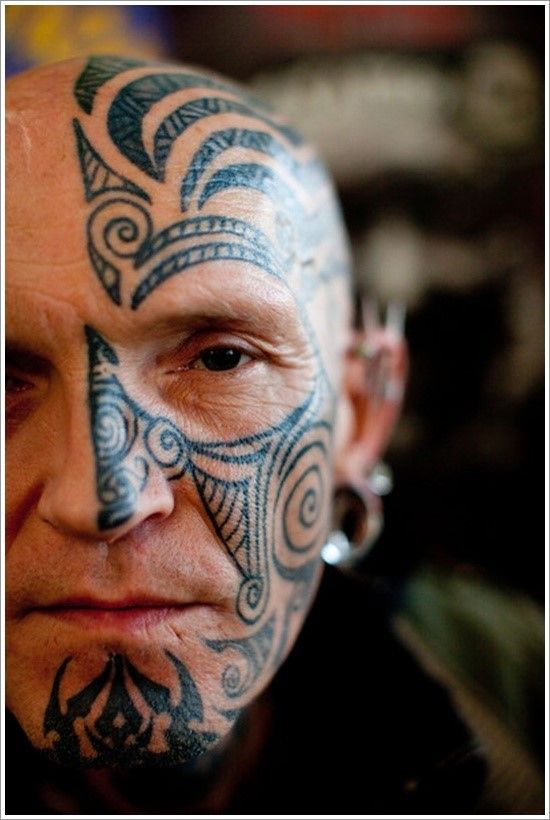
The process of receiving a ta moko tattoo involves carving the design into the skin using chisels and ink pigment. This process can be painful and requires great skill and precision from the tattoo artist.
The placement of the tattoo on the face is also significant. Different symbols and designs represent different aspects of the wearer’s identity, such as their tribe, family lineage, and personal accomplishments. The location of the tattoo on the face may also indicate the wearer’s social status or role within the community.
Maori tattoos are deeply rooted in spiritual beliefs and practices. They are not just a physical marking but serve as a bridge between the spiritual and physical realms. The tattoos connect the wearer to their ancestors and gods, serving as a reminder of their cultural heritage and spiritual identity.
Rites of Passage
The Maori face tattoo, also known as moko, is a traditional form of body art that has been practiced by the indigenous Maori people of New Zealand for centuries. The moko is a type of permanent facial tattoo that is created using a chisel and ink pigment, and it carries deep cultural and spiritual significance for the Maori people.
The process of receiving a moko is a sacred rite of passage that marks a person’s transition from one life stage to another. It might signify coming of age, marriage, parenthood, or other significant life changes. The design of the moko is typically unique to each individual, and it is designed to reflect their identity, ancestry, and social status within the community.

For Maori men, the moko usually covers the entire face, while women typically have a smaller design on the chin or lips. The placement and design of the moko carry specific meanings, with certain patterns and symbols representing different aspects of Maori culture and spirituality.
The moko is also a symbol of Maori pride and identity, and it serves as a visible reminder of the rich cultural heritage of the Maori people. In recent years, there has been a resurgence of interest in the moko among younger Maori generations who are seeking to reconnect with their cultural roots.
However, the practice of receiving a moko is not without controversy. Some critics argue that the moko is a form of cultural appropriation when worn by non-Maori individuals. Additionally, the moko can also be seen as a symbol of resistance against colonialism and cultural assimilation, reflecting the ongoing struggle of the Maori people to maintain their cultural identity and autonomy in a globalized world.
Overall, the Maori face tattoo is a powerful symbol of Maori cultural identity and spirituality, carrying deep meaning and significance for the Maori people. While its use may be controversial, it remains an important part of Maori cultural heritage and tradition.
Symbolism and Motifs
Maori face tattoo, also known as “Moko,” is a traditional form of body art created by the Maori people, the indigenous Polynesian people of New Zealand. Moko is applied to the face using a chisel and ink pigment, with each design being unique to the individual. The practice of Moko has been a significant aspect of Maori culture for centuries, with deep cultural and spiritual significance.
The specific patterns and motifs used in Maori face tattoo designs can carry symbolic meanings that reflect the wearer’s family lineage, social status, and personal identity. For example, spiral patterns can represent life’s journey and the idea of continuity and growth. This represents a person’s journey through life, including their past, present, and future.
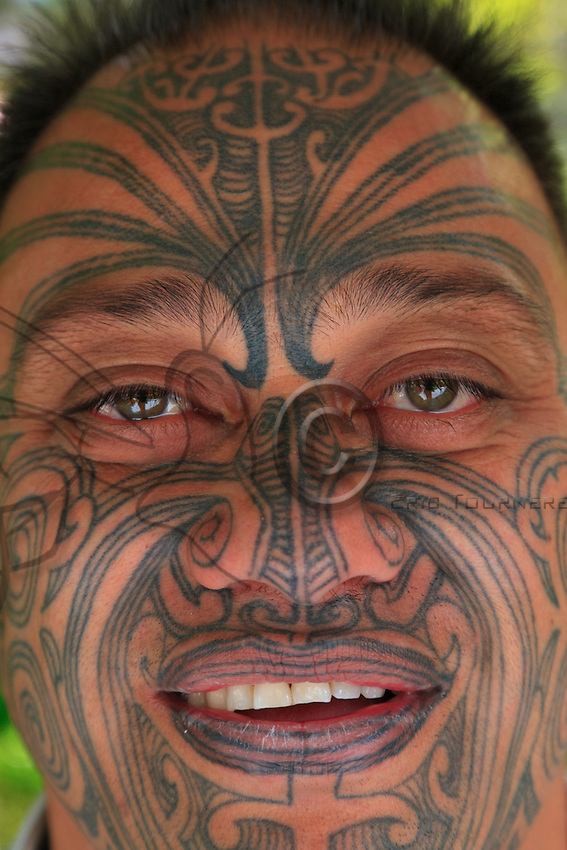
Other shapes and symbols found in Moko designs can have different meanings. For instance, triangles can represent stability and strength, while crescents might signify femininity and fertility. Nature-inspired motifs such as waves, ferns, and birds are also frequently incorporated into Moko designs. These elements often symbolize the connection between the individual and their environment, reflecting the importance of nature in Maori culture.
In addition to representing personal identity and societal status, Moko designs can also depict stories from Maori mythology and legend. Some designs incorporate figures and characters from these tales, such as the god Maui or the legendary hero Tawhaki, both of whom played important roles in Maori creation stories.
Overall, Maori face tattoos are more than just a form of body art. They are deeply rooted in Maori culture and tradition, carrying significant cultural and spiritual meaning. Each design is unique to the individual, reflecting their identity, heritage, and life journey.
Cultural Preservation
Maori face tattoos, also known as ta moko, are a cultural tradition of the indigenous Maori people of New Zealand. These tattoos are created by using chisels and ink to create intricate designs that cover the entire face or parts of it.
For Maori people, ta moko is much more than just body art; it’s an expression of identity, culture, and history. Each tattoo design is unique and holds significant meaning, reflecting the wearer’s ancestry, social status, and life experiences. The tattoos serve as a visual representation of the wearer’s whakapapa (genealogy) and personal story, connecting them to their ancestors and cultural heritage.
In the past, ta moko was used to mark important life events such as reaching puberty, marriage, and death. It was also a way for Maori warriors to intimidate their enemies and display their bravery and status. However, the practice of ta moko declined in the late 19th century due to colonization and Western influence, leading to a loss of cultural knowledge and identity.
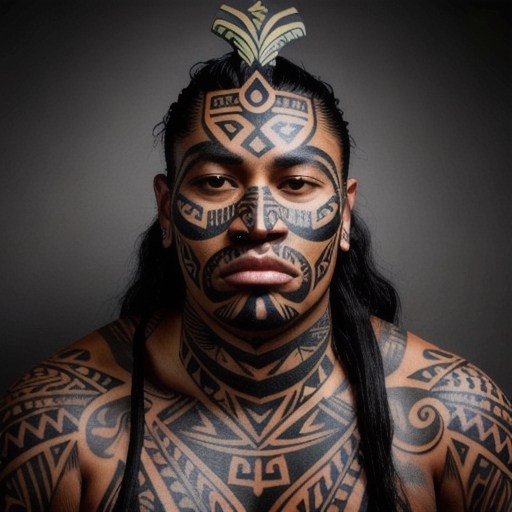
In recent years, there has been a resurgence of interest in ta moko, with many Maori people choosing to get face tattoos as a way to reconnect with their culture and honor their ancestors. In a modern context, ta moko has become a powerful tool for cultural preservation and communication. It allows Maori people to showcase their unique cultural identity and share their stories with the world.
Furthermore, Maori face tattoos have gained global recognition as an art form and a symbol of cultural heritage. Many contemporary artists and designers incorporate ta moko designs into their work, creating a fusion of traditional and modern aesthetics. This has helped spread awareness and appreciation of Maori culture and its significance to both Maori and non-Maori communities.
It’s important to note that Maori face tattoos are deeply sacred and culturally sensitive. They are not just an art form, but a living tradition that holds immense cultural value. If you’re interested in learning more about Maori face tattoos or considering getting one, it’s essential to engage in respectful research and, if possible, consult with Maori elders or cultural experts to understand the nuances and significance of this practice.
The Symbolism of Maori Face Tattoos
Each element of a Maori face tattoo has symbolic meaning, making them much more than just decorative designs. Here are a few examples:
Spiral
The spiral is a widely recognized motif in Maori tattoos, often used to symbolize new beginnings, growth, and the cyclical nature of life. This design element, which features a continuous, curving line that loops and twists around itself, has deep cultural significance for the indigenous people of New Zealand.
For the Maori, the spiral represents the concept of “Whakapapa,” which refers to the interconnectedness of all living things and the importance of ancestry and genealogy. The spiral is seen as a visual representation of the journey through life, with its ups and downs, twists and turns, and ultimately, its inevitable conclusion.

Furthermore, the spiral is often used to symbolize rebirth and renewal, reflecting the idea that life is a constant cycle of death and rebirth. For the Maori, this cycle is linked not only to the natural world but also to human experiences, such as birth, growth, aging, and death.
In Maori culture, tattoos hold significant value and are considered a deeply personal and spiritual practice. Each tattoo design is uniquely tailored to the individual and tells a story about their heritage, achievements, and personality. The spiral motif is often incorporated into Maori tattoos as part of larger designs, such as full or half-sleeve tattoos, chest pieces, or back pieces.
Koru
The koru is a significant symbol in Maori culture, representing many important values and ideas. It is a stylized representation of an unfolding fern frond, which is commonly found in New Zealand’s native forests. The koru has become emblematic of new life, growth, and peace, and is often used to represent these concepts in various forms of art, jewelry, and other decorative items.
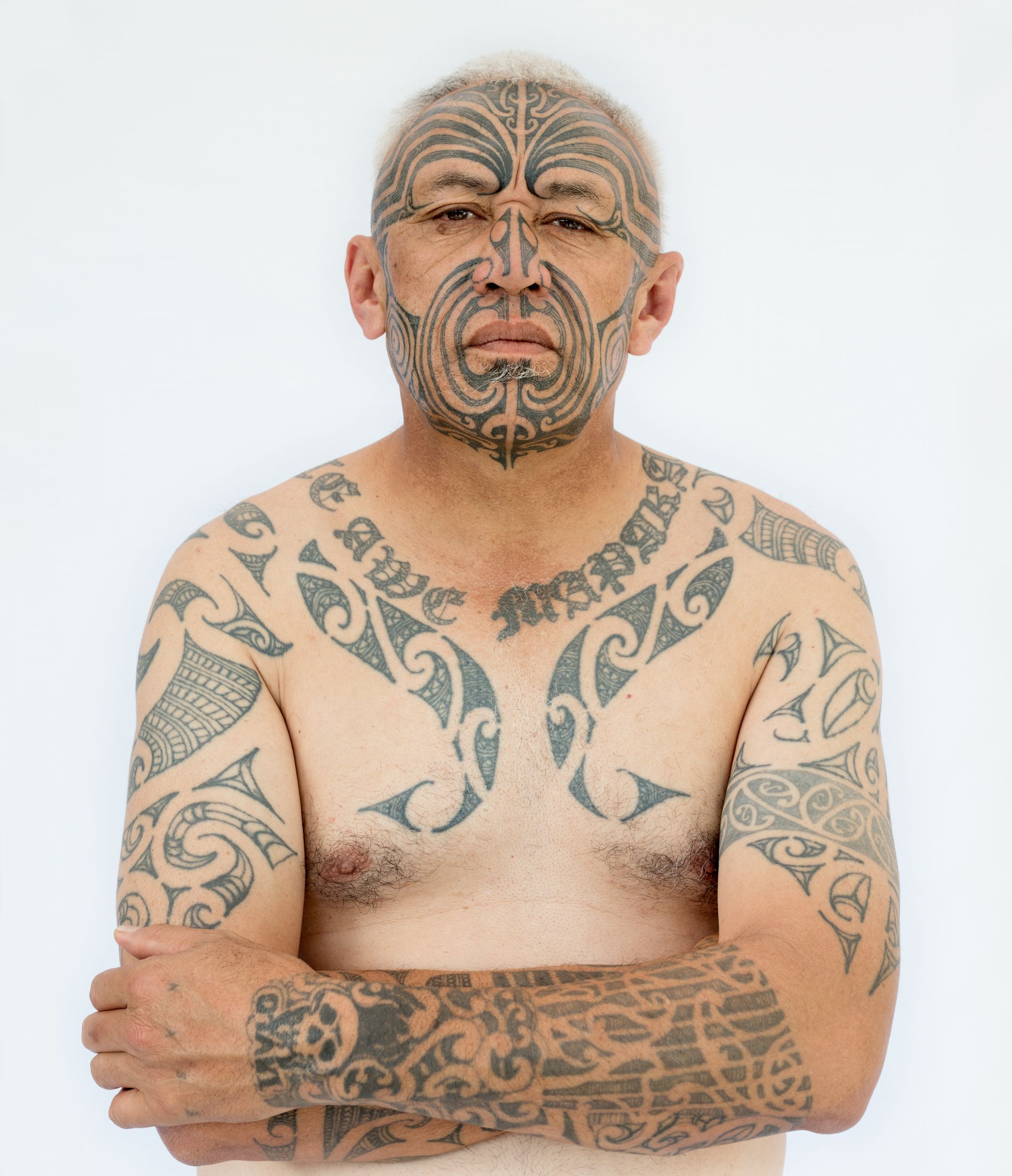
The koru is seen as a symbol of rebirth and renewal, representing the cyclical nature of life and the endless cycle of birth and death. Just like the frond of a fern unfurls and grows into a new plant, so too do people and societies experience growth and change as they move through life. The koru reminds us that even when things seem stagnant or difficult, there is always potential for growth and new beginnings.
In addition to representing new life and growth, the koru also represents peace and tranquility. When we see the image of a koru, we are reminded of the natural beauty and harmony of the world around us. This can be particularly comforting during times of stress or upheaval, reminding us to focus on what is beautiful and peaceful in our lives.
Manaia
The manaia is a mythical creature that holds significant importance in the culture and traditions of the Māori people of New Zealand. It is said to have the head of a bird, the body of a man, and the tail of a fish, which makes it a hybrid creature. The manaia is often depicted with wings, claws, and fierce-looking eyes, which adds to its aura of power and strength.
According to Māori mythology, the manaia was created by the god Tāne, who is also known as the god of forests and birds. The purpose of its creation was to serve as a guardian spirit that would protect people from harm and provide them with strength and courage when they needed it most. The manaia is believed to have the ability to ward off evil spirits and negative energies, and to guide people towards their true paths in life.
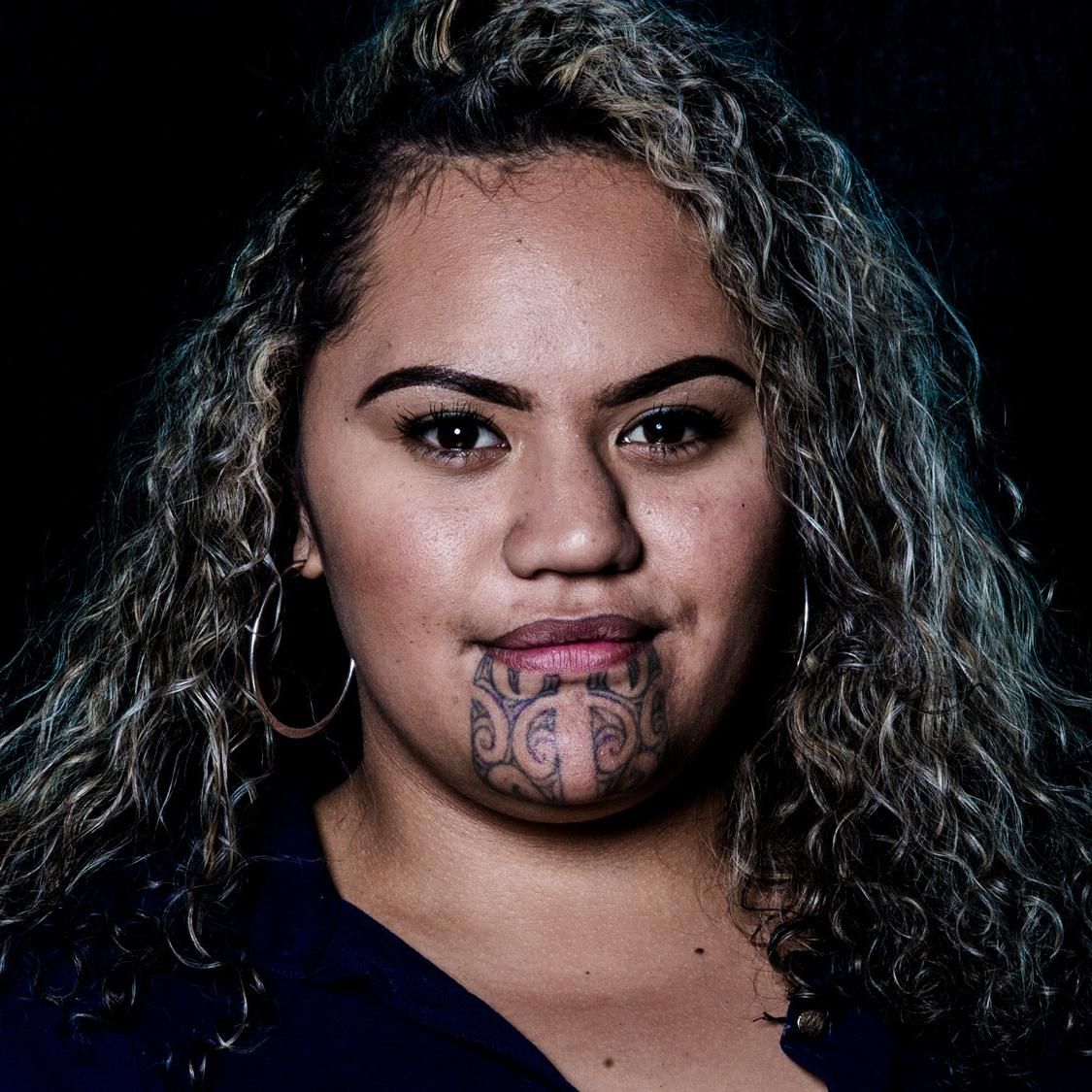
One of the key symbolic elements of the manaia is its combination of different animal features. The bird’s head represents the spiritual realm, while the human body represents the physical world, and the fish tail represents the ocean and the underworld. Together, these three elements symbolize the interconnectedness of all things and the balance between the spiritual and physical worlds.
In Māori art, the manaia is often depicted in intricate carvings and designs. These carvings can be found on traditional wooden objects such as waka (canoes), whare (houses), and tiki (statues). They are also commonly used in jewelry and tattoos. In each case, the manaia serves as a symbol of protection and strength, reminding people of their connection to the natural world and their responsibility to look after it.
Tiki
The tiki is a humanoid figure that has its origins in Polynesian and Melanesian cultures. It is often used to represent ancestors or spiritual guardians, and it is considered an important symbol in these cultures.
The tiki is usually depicted as a human-like figure with a large head and a stocky body. The head is often disproportionately large compared to the body, and it features large, expressive eyes, a broad nose, and a wide mouth. The body is usually portrayed as muscular and powerful, with broad shoulders and a well-defined chest.
In many Polynesian and Melanesian cultures, the tiki is believed to have special powers and abilities. It is considered a guardian spirit that can protect individuals and communities from harm. The tiki is also thought to be a reminder of the importance of family and community. In some cultures, the tiki is used as a talisman to ward off evil spirits and negative energies.
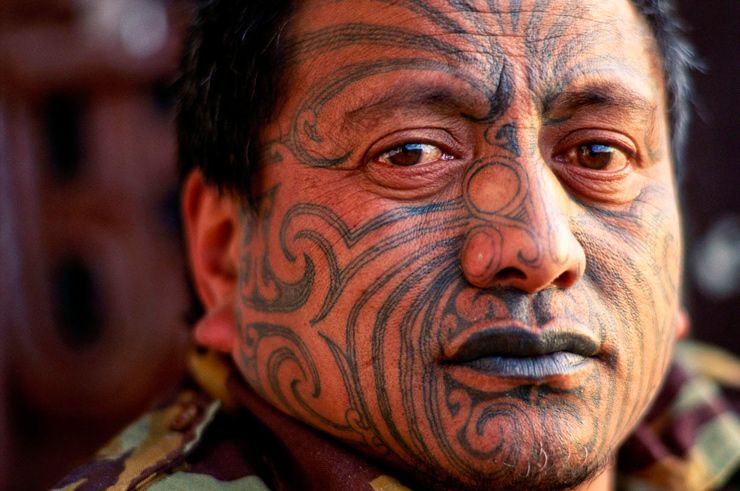
The use of the tiki varies across different cultural contexts. In some places, the tiki is used as a decorative object, while in others it is used in religious ceremonies and rituals. In Hawaii, for example, the tiki is often used as a symbol of Hawaiian culture and is found in many forms of art and decoration.
Despite its popularity as a symbol of Polynesian and Melanesian culture, the tiki has also been appropriated by Western popular culture, particularly in the United States. In this context, the tiki is often depicted in a caricatured form that emphasizes its exoticism and otherness. This has led some critics to argue that the use of the tiki in Western popular culture is a form of cultural appropriation that erases the meaning and significance of the tiki in its original cultural context.
Mataora and Uetonga
The two designs that appear on either side of the forehead are known as bindis in Indian culture, a symbol with deep spiritual significance. The designs are usually circular or crescent-shaped and are often decorated with intricate patterns or jewels.
In Hinduism, the bindi is worn by both men and women and represents the third eye, or ajna chakra, which is located in the center of the forehead. This chakra is believed to be the seat of intuition and wisdom, allowing individuals to see beyond the physical world and connect with the spiritual realm.

The bindi also represents the balance between the physical and spiritual worlds, as it is placed on the point where these two realms intersect. By wearing the bindi, individuals can cultivate this balance within themselves and bring harmony to their lives.
In addition to its spiritual significance, the bindi also has cultural and aesthetic value. It is often worn as a decorative accessory and can be matched with an individual’s outfit or jewelry.
Are Maori Face Tattoos Offensive?
Maori face tattoos are an important part of Maori culture and should be respected as such. However, it is important to note that not all Maori people have face tattoos, and not all Maori people are comfortable with non-Maori people wearing them.
It is essential to approach Maori face tattoos with respect and understanding. If you are considering getting a Maori face tattoo, it is crucial to do your research and find a tattoo artist who is knowledgeable about Maori culture and designs.
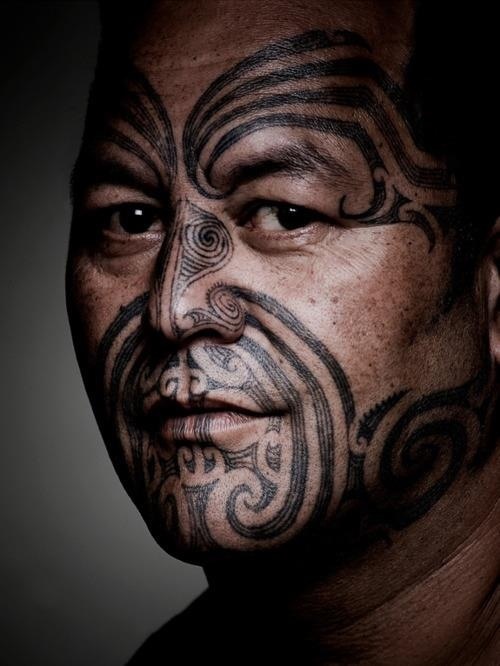
Conclusion: Maori Face Tattoo Meaning
Maori face tattoos are a beautiful and deeply meaningful form of body art that is specific to Maori culture. Each design tells a story and represents a significant aspect of Maori culture. If you are considering getting a Maori face tattoo, it is important to approach the process with respect and understanding.
Whether you are Maori or not, a Maori face tattoo can be a powerful way to connect with your heritage and honor your ancestors. With the right tattoo artist and a deep understanding of Maori culture, a Maori face tattoo can be a truly transformative experience.

I am Harvey Berry, a tattoo enthusiast who has immersed himself in the diverse world of ink, passionately exploring the beauty and artistry within each tattoo. My mission extends beyond uncovering the aesthetics of tattooing; it involves sharing in-depth knowledge across all aspects of this art form.
Fueled by genuine curiosity and love for every facet of tattooing, I have diligently crafted well-researched articles, with a special focus on the Tattoo Meaning of Impeccable Nest section. Here, my aim is to help the tattoo community gain a deeper understanding of the meanings and values embedded in each tattoo.
One of my primary goals is to encourage responsible decision-making when it comes to getting inked. I recognize that choosing to get a tattoo is a significant personal decision that requires careful consideration. Hence, I provide diverse resources covering the meaning of tattoos, the tattooing process, aftercare tips, and other valuable information.
Whether you are a seasoned tattoo enthusiast or embarking on your first exploration of the world of body art, I aspire to be a reliable resource for you at every step of your journey. I hope that my extensive knowledge of tattoos, especially in the Tattoo Meaning section, will assist you in finding inspiration to express yourself through the art of tattoos.
